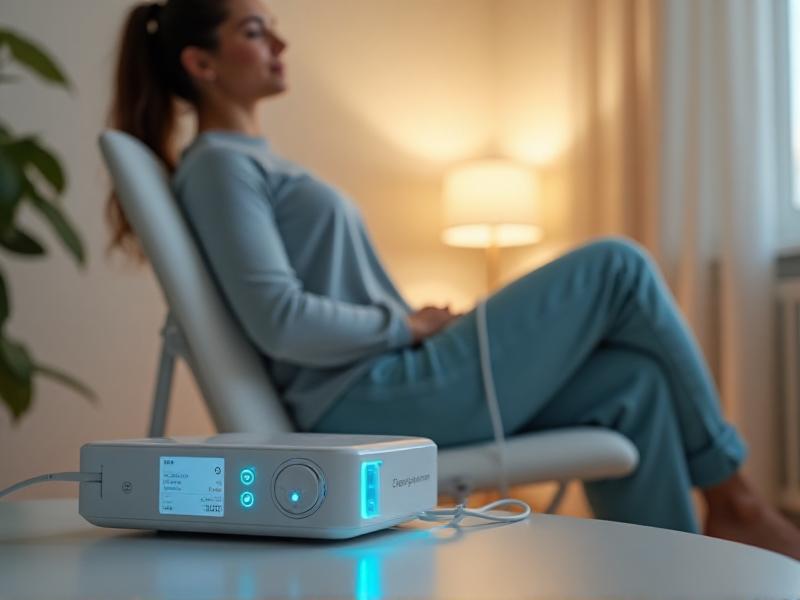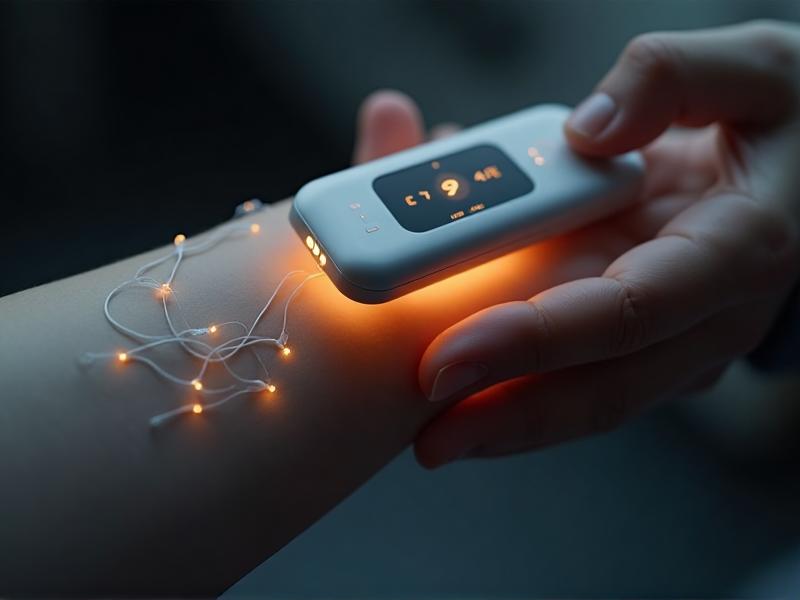Electrostimulation Therapy Home Devices
Understanding Electrostimulation Therapy: An Overview
Electrostimulation therapy, often referred to as electrical muscle stimulation (EMS) or neuromuscular electrical stimulation (NMES), is a technique that uses electrical impulses to elicit muscle contractions. This method has been widely used in physical therapy and rehabilitation settings for decades. However, with advancements in technology, electrostimulation therapy has become accessible to the general public through home devices. These devices are designed to help users manage pain, improve muscle strength, and enhance recovery without the need for professional supervision.
At its core, electrostimulation therapy works by delivering low-voltage electrical currents to targeted muscle groups through electrodes placed on the skin. These currents mimic the action potentials that naturally occur in the nervous system, causing muscles to contract and relax. This process can help improve blood circulation, reduce muscle atrophy, and alleviate pain caused by conditions such as arthritis or injury.
Home devices have made this therapy more convenient and affordable. They come in various forms, including wearable belts, pads, and handheld units, each designed for specific applications. Whether you're an athlete looking to enhance performance or someone seeking relief from chronic pain, electrostimulation therapy home devices offer a versatile solution.

How Electrostimulation Therapy Home Devices Work
Electrostimulation therapy home devices operate on the principle of transcutaneous electrical nerve stimulation (TENS) or electrical muscle stimulation (EMS). These devices typically consist of a control unit, electrodes, and sometimes a smartphone app for customization. The control unit generates electrical impulses, which are transmitted to the body via the electrodes. Users can adjust the intensity, frequency, and duration of the impulses to suit their needs.
When the electrical impulses reach the muscles, they stimulate motor neurons, causing the muscles to contract. This process can help strengthen weak muscles, improve endurance, and reduce muscle stiffness. For pain relief, the electrical impulses interfere with pain signals traveling to the brain, providing a non-invasive alternative to medication.
Modern devices often feature pre-programmed settings for different applications, such as pain relief, muscle recovery, or fitness enhancement. Some even use Bluetooth technology to sync with smartphones, allowing users to track their progress and customize their therapy sessions. The ease of use and portability of these devices make them an attractive option for individuals seeking to incorporate electrostimulation therapy into their daily routines.

Benefits of Using Electrostimulation Therapy at Home
One of the primary advantages of electrostimulation therapy home devices is their convenience. Users can perform therapy sessions in the comfort of their own homes, eliminating the need for frequent visits to a physical therapist. This is particularly beneficial for individuals with busy schedules or limited mobility.
Another significant benefit is cost-effectiveness. While professional electrostimulation therapy sessions can be expensive, home devices are a one-time investment that can be used repeatedly. Over time, this can lead to substantial savings, especially for those who require ongoing therapy.
Electrostimulation therapy home devices also offer versatility. They can be used for a wide range of applications, from pain management to muscle conditioning. Athletes, for example, can use these devices to enhance their training routines, while older adults can use them to maintain muscle strength and mobility. Additionally, many devices are compact and portable, making them ideal for travel or use on the go.

Choosing the Right Electrostimulation Therapy Device for You
With so many electrostimulation therapy home devices on the market, selecting the right one can be overwhelming. The first step is to identify your specific needs. Are you looking for pain relief, muscle recovery, or fitness enhancement? Different devices are designed for different purposes, so it's essential to choose one that aligns with your goals.
Next, consider the features of the device. Look for adjustable settings, such as intensity levels and pulse frequencies, to ensure you can customize your therapy sessions. Some devices also offer additional features, such as built-in timers, rechargeable batteries, or smartphone compatibility. These can enhance the overall user experience and make the device more convenient to use.
Finally, read reviews and do your research. User feedback can provide valuable insights into the effectiveness and reliability of a device. Additionally, consult with a healthcare professional if you have any underlying medical conditions or concerns. They can help you determine whether electrostimulation therapy is suitable for you and recommend specific devices based on your needs.
Safety Tips for Using Electrostimulation Therapy Home Devices
While electrostimulation therapy home devices are generally safe, it's important to use them correctly to avoid potential risks. Always read the user manual before using the device. This will provide you with essential information on how to operate the device safely and effectively.
Start with low-intensity settings and gradually increase the intensity as your body adapts. Avoid placing electrodes on sensitive areas, such as the neck, face, or areas with open wounds. Additionally, do not use the device for extended periods, as this can lead to muscle fatigue or skin irritation.
If you experience any discomfort or adverse effects, stop using the device immediately and consult a healthcare professional. While electrostimulation therapy is beneficial for many, it may not be suitable for everyone. Individuals with certain medical conditions, such as pacemakers or epilepsy, should avoid using these devices unless advised otherwise by a doctor.
The Future of Electrostimulation Therapy Home Devices
As technology continues to evolve, so too will electrostimulation therapy home devices. Future advancements may include more sophisticated algorithms for personalized therapy, integration with wearable technology, and enhanced portability. These innovations will make electrostimulation therapy even more accessible and effective for users.
Another exciting development is the potential for AI-driven devices. These could analyze user data to optimize therapy sessions in real-time, providing a truly customized experience. Additionally, as research into electrostimulation therapy expands, we may discover new applications for these devices, further broadening their appeal.
Ultimately, the future of electrostimulation therapy home devices is bright. With ongoing advancements and increasing awareness of their benefits, these devices are poised to become a staple in personal health and wellness routines. Whether you're seeking pain relief, muscle recovery, or fitness enhancement, electrostimulation therapy home devices offer a promising solution for improving your quality of life.







